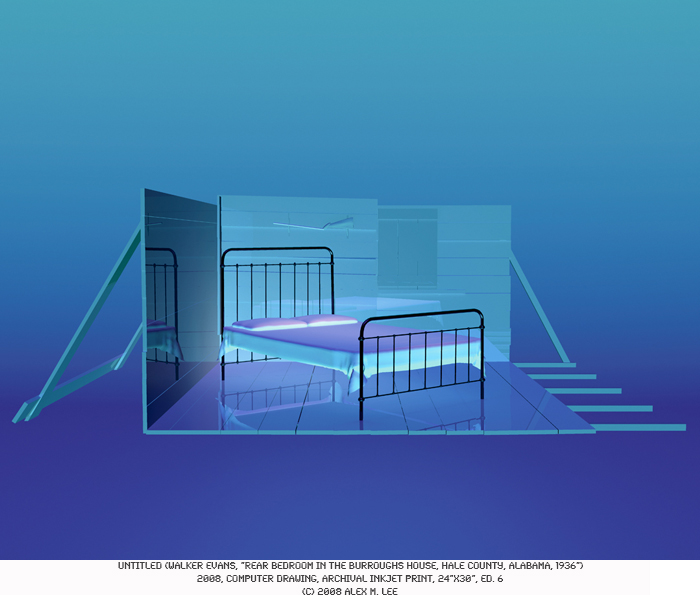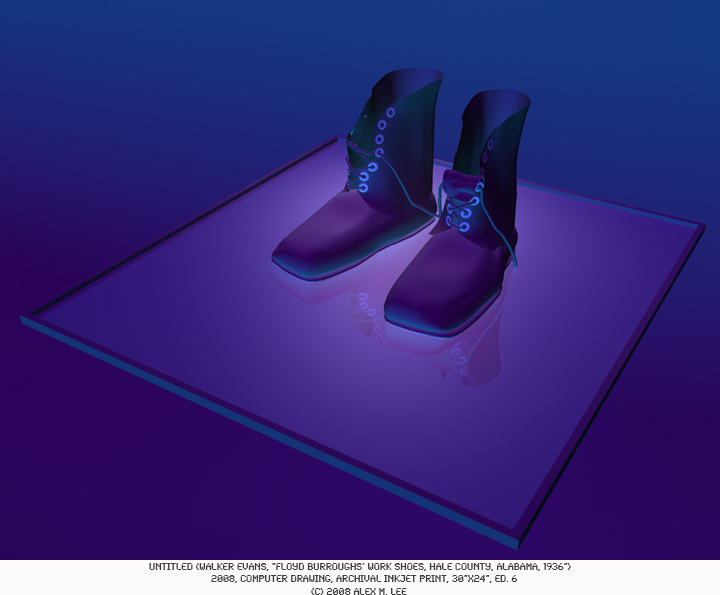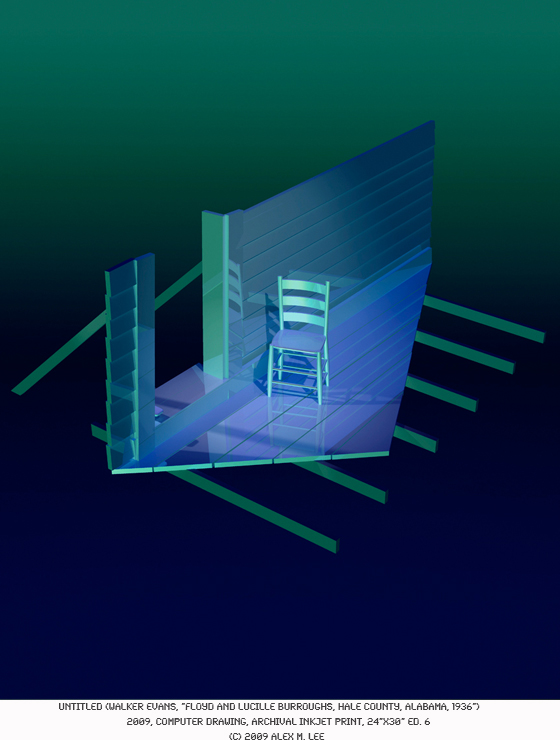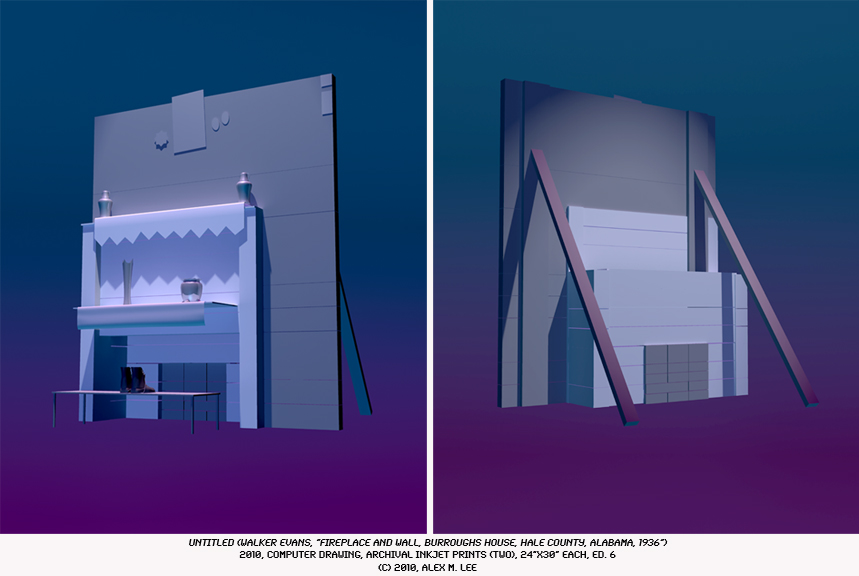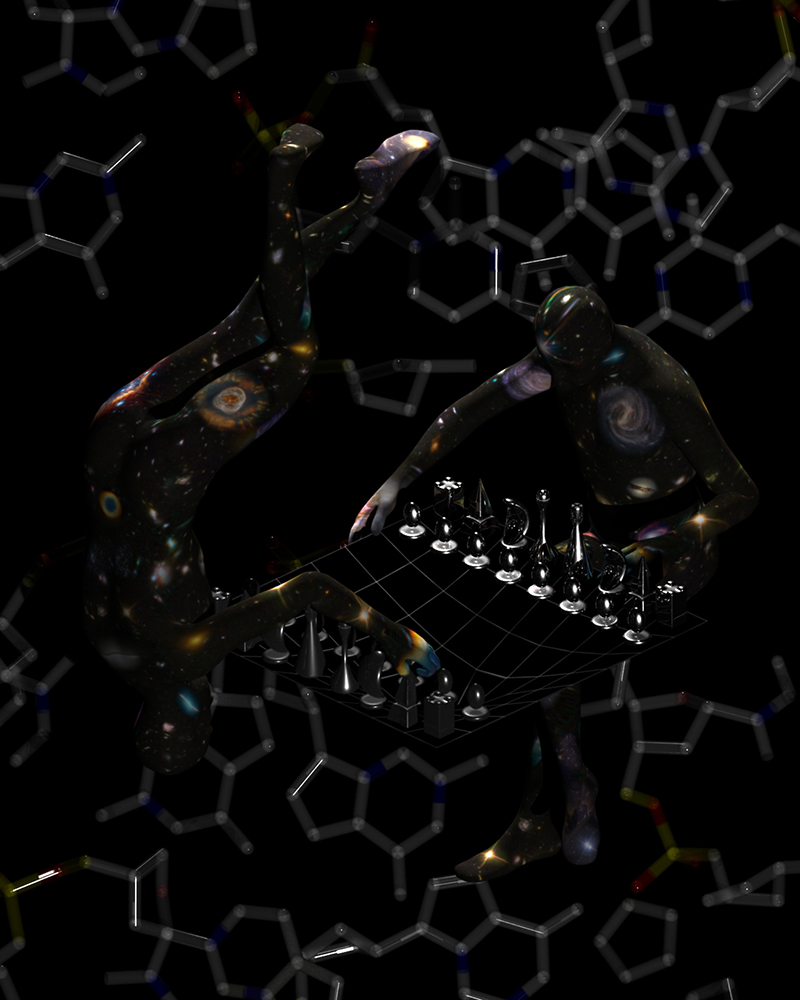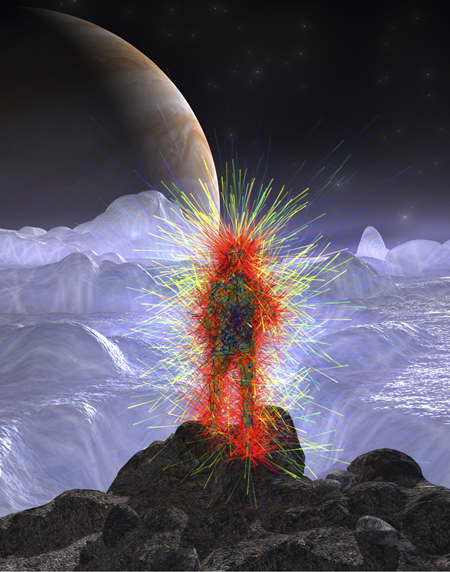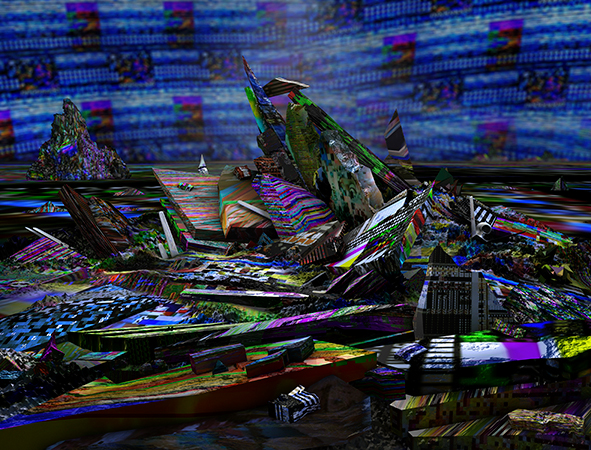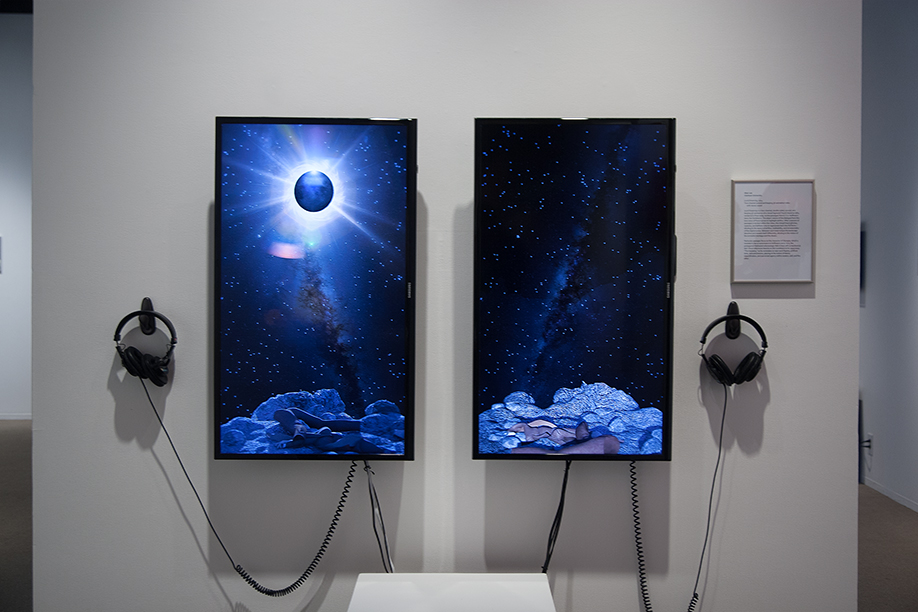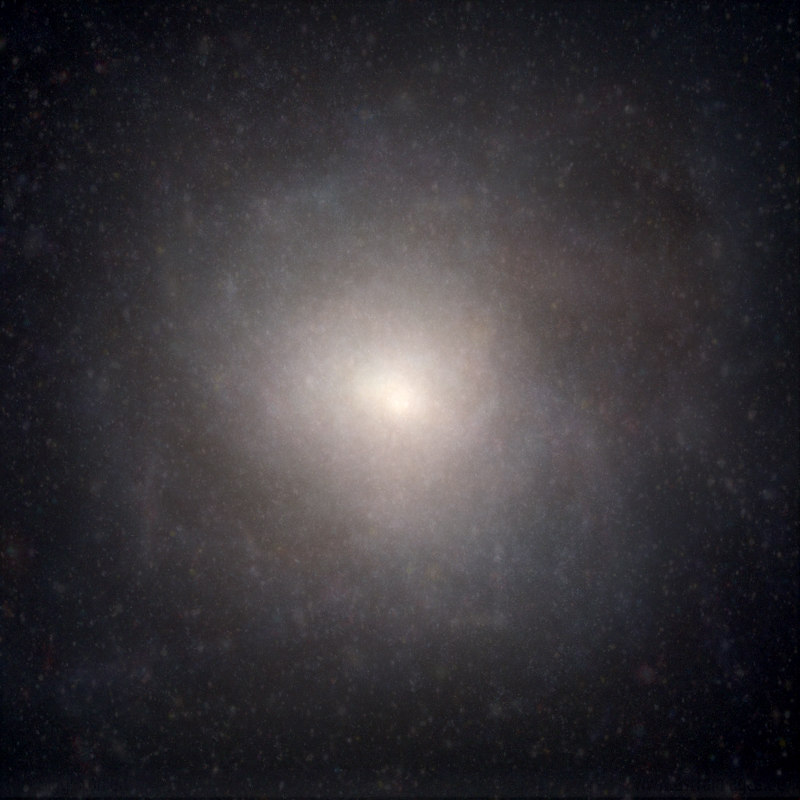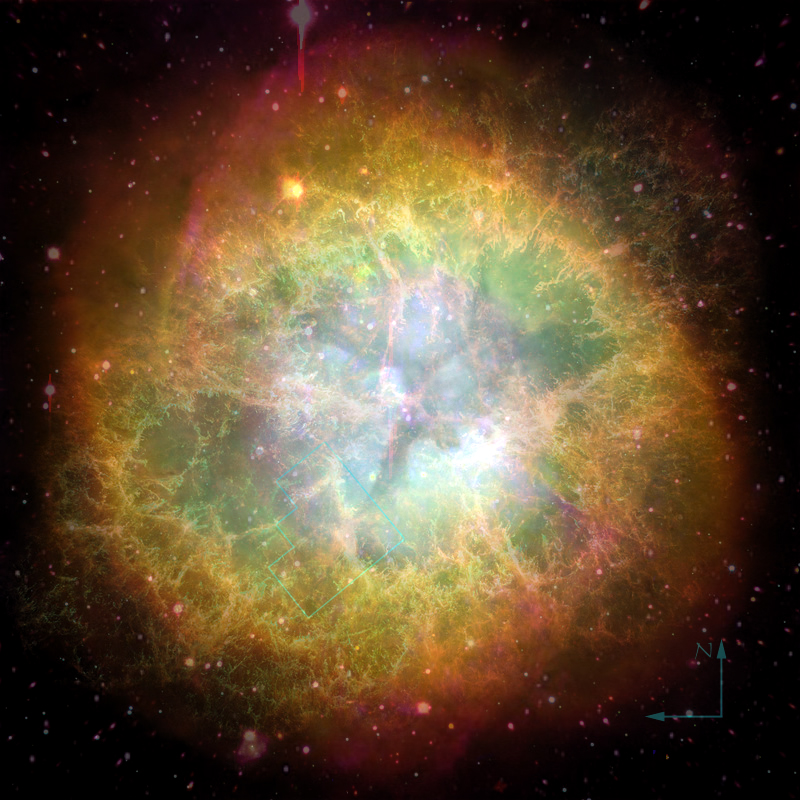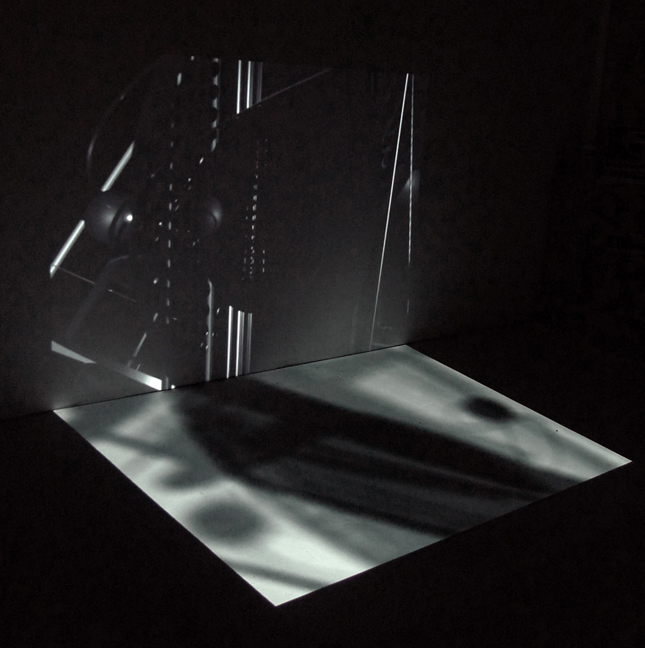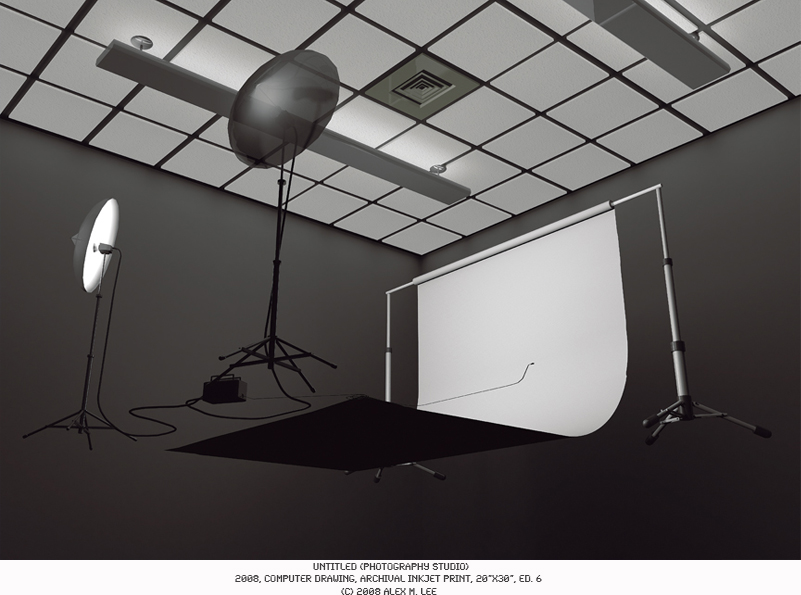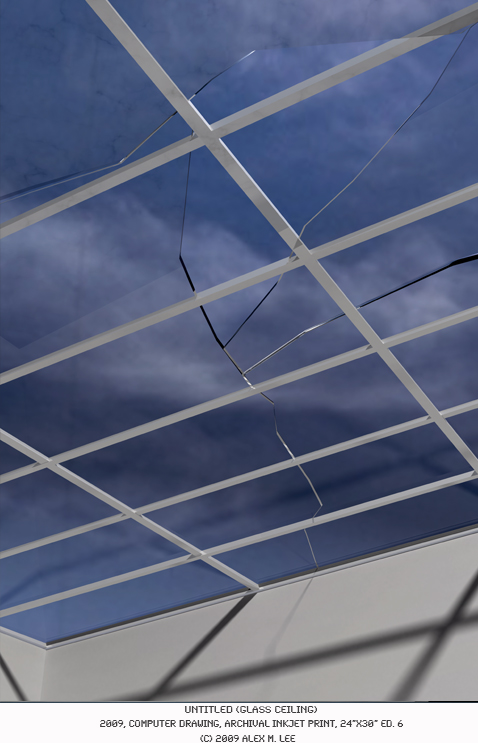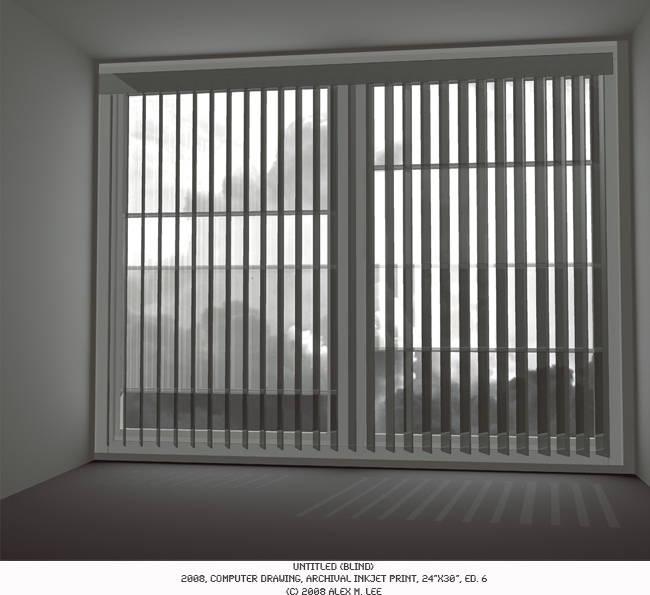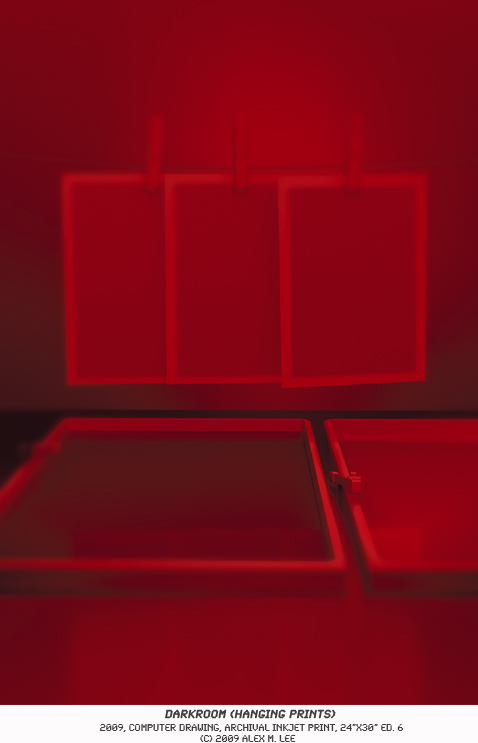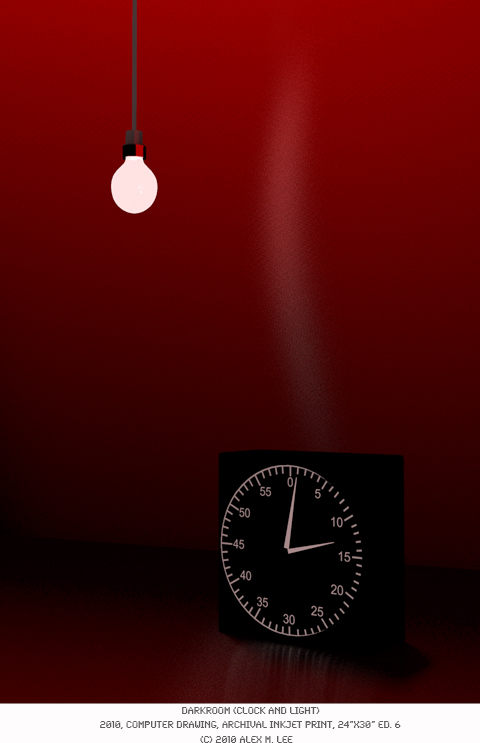01) "Soliloquy for Sagan"
Soliloquy for Sagan is a single-channel 3D animation evoking concepts & representations found in astrophysics. Semi-abstract, the animation suggests DNA, atoms, light waves, Messier Deep Sky objects, and the range of objects that encompass our current range of understanding of our reality.
Dialogue for Soliloquy for Sagan is taken from ‘The Varieties of Scientific Experience” by Carl Sagan. Selected passages focus on the poetic and noblest aspects of his writing. Selected sound effects are taken from recordings of space taken by Voyager I and Voyager II space missions – a program heralded by Sagan. Soliloquy for Sagan is conceived as a homage to Sagan and the message he gave about humanity’s place within the Cosmos.
single channel 3D animation with stereo sound, running time 9'18", 2015
02) "Fractals, Particles, Photons, & Microwaves"
Fractals, Particles, Photons, & Microwaves is a single-channel 3D animation evoking the language of physics, mathematics, and quantum mechanics. Procedurally animated, the piece conveys concepts found in 'The Little Book of String Theory' by Steven S. Gubser. The flow of particles represent electrons & positrons (E) and photons (Y). Particles are animated visualizing what happens when an electron splits into anti-electrons during a cascade event (an electromagnetic particle shower).
In quantum mechanical theory, a particle shower is a predictable event and suggests that an electron all by itself may have infinite charge and infinite mass, but once split, its charge and mass becomes finite. A common example of particle showers would be when cosmic rays hit earth's atmosphere.
The particle showers are filtered through a Dave Jones Mini Video Image Processor. The properties of the cascade segments are transformed using the MVIP voltage control instruments.
single channel 3D animation with stereo sound, 2'30" excerpt of total running time of 4'30", 2015
computer rendering, archival inkjet print mounted on plexi, 31"x40", edition of 3, 2016
04) "untitled (The Wanderer Above the Sea of Fog)"
The re-imagining of 19th century Romantic painting fused with the artists' utilization of certain data sets within astrophysics. The work fuses these concepts with the canonical work by Caspar David Freiderich. The crystalline figures in these images are textured by recent image produced by the Wilkenson Microwave Anistropropy Probe. Each varying degree of the spectrum of blue, green, yellow, and red within the WMAP provdes a data set which can be mapped out expressively. Literally a long exposure of cosmic background radiation, the WMAP is considered to be a photograph of the remnants of the Big Bang.
computer rendering, archival inkjet print mounted on plexi, 31"x40", edition of 3, 2013
05) "untitled (Rugen)"
computer rendering, archival inkjet print mounted on plexi, 31"x40", edition of 3, 2013
06) "The Sea of Glitch (A.K.A. The Great Wreck of Data)"
The re-imagining of Caspar David Freidrich's iconic painting comprised with various glitch imagery found online.
computer rendering, archival inkjet print mounted on plexi, 31"x40", edition of 3, 2013
07) "Lucid Dreaming"
“Lucid Dreaming” involves a two-channel, double-sided, synced, and looping virtual Sigmund Freud character in Pixar style, reciting passages from E.T.A. Hoffman’s story, 'Der Sandmann'. The abject nature of the dialogue from the true voice of Freud serves to highlight artifice. After a session of passages is recited within the video, the virtual Freud glitches, ruptures and deflates only to regenerate back into full form - alluding to the aspect of artifice, malleability, and immateriality of the digital avatar. Between each total eclipse the landscape dissolves and reveals itself differently, alluding to the notion of the Surrealist montage and the dream. Particular sections of passages selected by the artist focuses on the character “Olympia”, which is revealed to be an automaton in Hoffman’s story. In it, the protagonist Nathaniel unknowingly falls in love with a mechanical doll. Freud references heavily on Der Sandmann in his 1919 essay “The Uncanny”, ruminating on wax-work figures, artificial dolls and automatons, playing on the notion of desire, objectification, and perceived agency within avatars, self, and the other.
*This work was commissioned by Trinity Square Video, Toronto, ON as part of their commission-based residency program.
two-channel synced & looping 3D animation with stereo sound, 1' excerpt of a total running time of 9'33", 2014
'Lucid Dreaming', two-channel, synced, and looping videos, custom syncing software, headphones
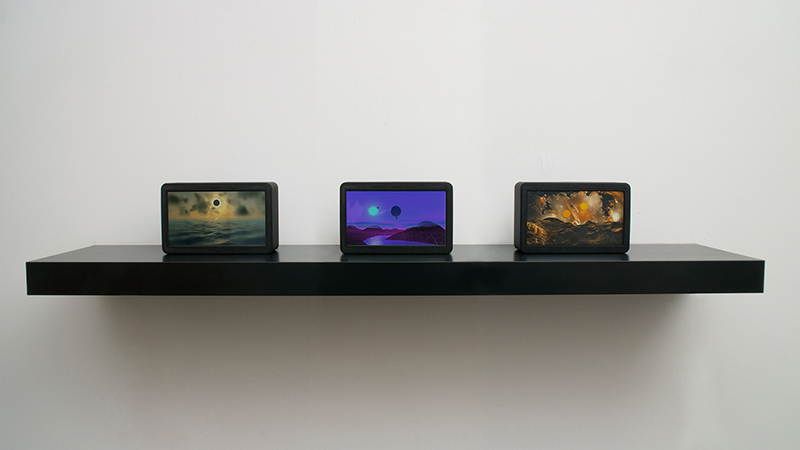
10) "Alpha Centauri"
An artist's interpretation of the Alpha Centauri system, which has the closest exoplanet to earth if verified.
stereo sound composed by Simone Pitot & Shane Turner, 30 second excerpt of 37 minute looping 3D animation, 2014
11) "An Alternate Framework"
An Alternate Framework is a looping 3D animation involving a simulation of orbiting planetary bodies. It presents a situation impossible to known astrophysics - playing off our known understanding of the framework of our Universe and utilizing the possibilities of simulation.
The landscape, reminiscent of the Cartesian-Coordnate system, is a reference to the grid and measurement. It serves as a practical aid for the viewer in order to gauge the level of water as it changes throughout the animation.
An Alternate Framework presents a system of impossibility, a reference to the sublime and awe - which comes from the attempt at knowledge at a system that is terrifyingly complex. Sound is composed by fellow artist Erin Gee. It utilizes remixed sounds initially recorded by the Cassini mission amongst other audio recordings of space.
11 minute looping 3D animation, sound composed by artist Erin Gee, 2013
12) "The Frequency of Space/Time"
The Frequency of Space/Time is a computer animation of an artificial sunrise/sunset with a total eclipse of the sun by the moon occurring at the apex of its position above the horizon. The moon follows a parabolic trajectory while the sun slowly rises and sets over a simulated moving body of water. Total eclipse, known as totality, occurs every 16 minutes in the animation while the whole piece cycles every 32 minutes.
2 minute excerpt of 3D animation looping every 32 minutes, 2010, stereo sound
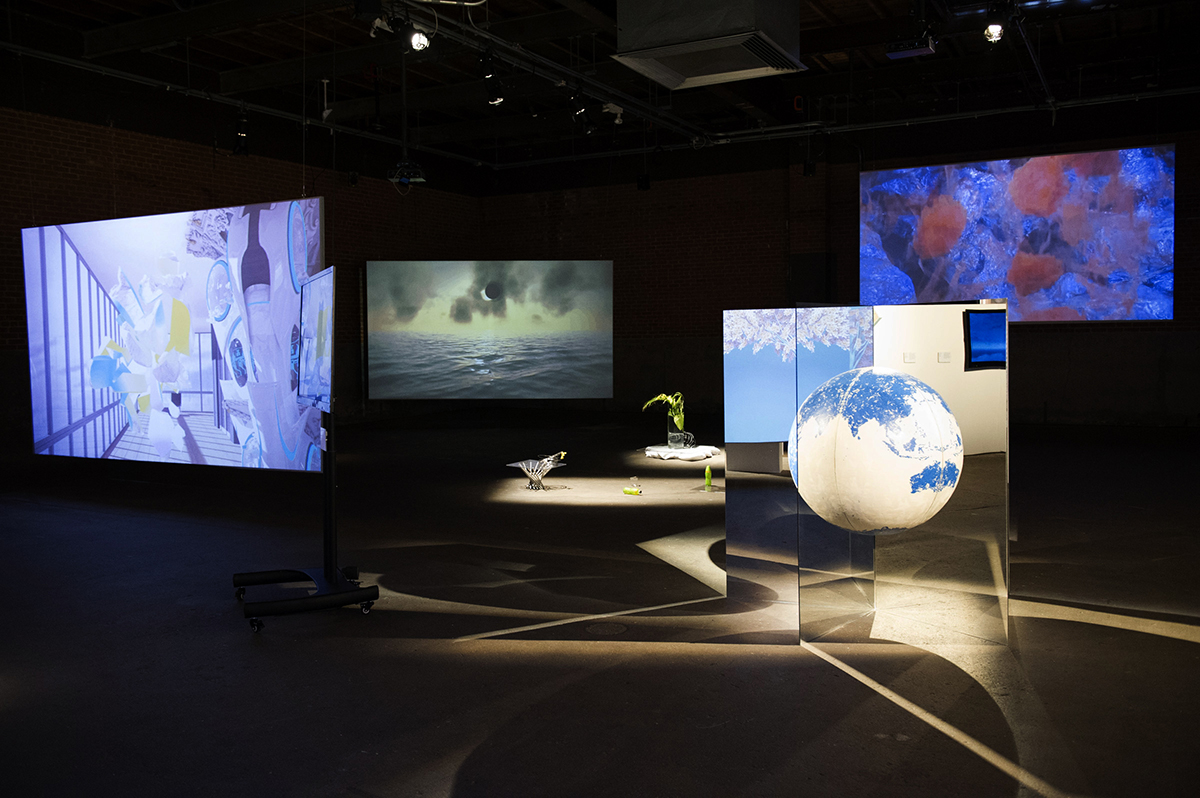
13) "Every Globular Cluster in the Messier Catalog", Keith's Image Stacker, archival inkjet print, 80"x80", 2015
The subsequent images comprise a series of images that utilize Keith's Image Stacker, an image stacking software designed for amateur astronomers. The user can utilize the image stacker to 'stack'(composite) multiple still images of faint objects to construct a more detailed picture of the object. This software is primarily designed for photographs of faint deep sky objects taken by the user.
In these examples, Keith's image stacker is utilized to stack objects against its intended purpose. All the images selected for 'stacking' are found from the Messier Catalog of Deep Sky Objects - the quintessential traditional survey of 103 astronomical objects. The choice of images to stack are categorical and represent a typology of objects found in the sky (within the sample size of the Messier Deep Sky Survey). The images can represent part typographical study and to me connote a deeper metaphor about the malleability of the fabric of space/time.
14) "Every Galaxy in the Messier Catalog", Keith's Image Stacking Software, archival inkjet print, 80"x80", 2015
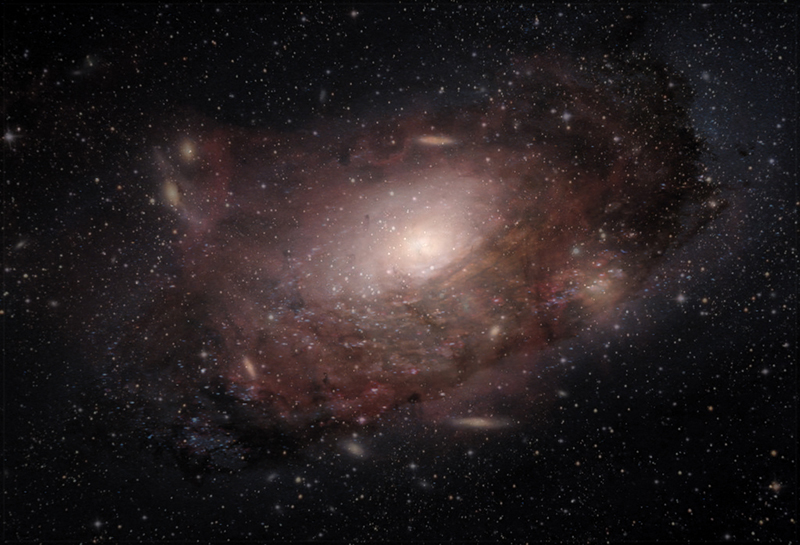

21) "Haeshigae (for Proust)"
Haeshigae (for Proust) is a two-channel animation of the virtual recreation of an ancient clock, the Korean Sundial (originally developed during the Joseon Dynasty), covered with Facebook posts collected from various friends over the course of three months. An aggregated simulation of sunlight passing over the course of a season (without nighttime situations) creates a cast shadow that indicates the passage of time. The frames of the animation advances every second in real time allowing the animation to be utilized as a true timepiece (by seconds), but also abstracting the concept of time and the virtual-tying it to the archive of texts associated with a users Facebook page.
two-channel, 3D animation, stereo sound, 1 minute excerpt of 1 hour 40 minutes, looping infinitely, 2012 |
.jpg)
22) "The Glass House (after J.G. Ballard)"
The Glass House (after J.G. Ballard) is a single-channel 3D animation involving the virtual reconstruction of Philip Johnsons’ famed Glass House in New Canaan, Connecticut. Known as a masterpiece in the use of glass, the 3D animation shows the Glass House in various simulations of light and shadow. Built in 1949 as his own private residence, Johnson lived at the weekend retreat for 58 years before passing away while asleep there in 2005. Text is taken from passages of J.G. Ballard’s short story The Thousand Dreams of Stellavista. The story involves a protagonist living in a house built by famed fictitious architect Mies Vanden Starr. Starr had lived in the residence previously and passed away there while asleep (albeit under more nefarious circumstances than Johnson). The 3D animation juxtaposes these two fictitious and realistic narratives to present an essay on Modernist architecture, psychological space, loss and memory.
single-channel, 3D animation, stereo sound, running time 8:15 minutes, 2011
23) "Lazlo's Shadow (after Light Space Modulator)"
Lazlo’s Shadow (after Light Space Modulator) is a two-channel video projection involving the virtual re-creation of Lazlo Moholy-Nagy’s Light Space Modulator. Originally created in 1930s, the LSM embodied Moholy-Nagy’s belief in the utilization of machines in the creation of art to be part of the zeitgeist of the 20th Century. Lazlo’s Shadow utilizes the abilities of 3D computer graphics to re-create and re-structure the presentation of the original LSM while accurately presenting a virtual cast of shadow and light in the physical space of the gallery. Lazlo’s Shadow embodies the renewed relevance of the Bauhaus in the context of virtual imaging. The Bauhaus re-conceptualized the relation of technology to culture and the relativity of representation and reality. Recent advances in 3D imaging represents a big paradigm shift since the Bauhaus, making the Bauhaus visioning of the relation between machines, technology, and culture important to interpret virtually.
"Lazlo’s Shadow (after LSM)", installation view (excerpt), two channel 3D animation, one channel projected on floor and another at right angle on wall, dimensions variable, Dolby Surround Sound, looping every 9:10 minutes, 2010
25) "untitled (First Photograph Ever)", computer drawing, archival inkjet print, 24"x30", edition of 6, 2008
The subsequent images are a self-referential series that focuses on the potential for new forms utilizing computer aided image making that would present a paradigm shift in representation and photographic imagery. While traditional photographs have always been connected to the capturing/indexing of light, this work explores the abilities of digital imaging to shatter that physical connection to a more radical position of the photographic image as a data set that can be rendered through a computer virtually. I see this work as metaphorically addressing the emancipatory possibilities of photography’s loss of the index.

35) "untitled (Walker Evans, Washstand and Kitchen, Hale County, Alabama, 1936)", computer drawing, archival inkjet print, 24"x30", edition of 6, 2008
These subsequence images are works in a series in which Walker Evans’ artistic documentary photographs are re-drawn as theatrical sets on the computer. Specifically of the Burroughs family, Evans’ portraits are often considered to be quintessential examples of social documentary, but my deeper investigation revealed a attitude that many of these photographs can be percieved as staged by the operator. My images place the audience in a ‘once removed’ position, a Brechtian ‘verfremdungseffekt’, in order to produce an analytical position rather than propagate constructed empathy.

